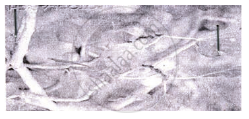Advertisements
Advertisements
प्रश्न
What are the major factors that are responsible for the loss of biodiversity? What steps are needed to prevent them?
उत्तर
Major causes for loss of biodiversity are as follows:
- Since the last few decades, growth in human population has increased the rate of consumption of natural resources. It has accelerated the loss of species and habitation in different parts of the world.
- Over-exploitation of resources and deforestation have become rampant to fulfill the needs of large population. As these tropical rain forests contain 50 percent of the species on the earth, destruction of natural habitats have proved disastrous for the entire biosphere.
- Natural calamities such as earthquakes, floods, volcanic eruptions, forest fires, droughts, etc. cause damage to the flora and fauna of the earth, bringing changes to the biodiversity of respective affected regions.
- Pesticides and other pollutants such as hydrocarbons and toxic heavy metals destroy weak and sensitive species.
- Conservation strategy has suggested the following steps for biodiversity conservation:
- Efforts should be made to preserve the species that are endangered.
- Prevention of extinction requires proper planning and management.
- Varieties of food crops, forage plants, timber trees, livestock, animals and their wild relatives should be preserved;
- Each country should identify habitats of wild relatives and ensure their protection.
- Habitats where species feed, breed, rest and nurse their young ones should be safeguarded and protected.
- International trade in wild plants and animals be regulated.
APPEARS IN
संबंधित प्रश्न
Substantiate with the help of one example that in an ecosystem mutualists
are also one of the major causes of biodiversity loss.
Answer the following question:
Substantiate with the help of one example that in an ecosystem mutualists
(i) tend to co-evolve and
(ii) are also one of the major causes of biodiversity loss.
Very short answer type question
What do you understand by the EW category of a living being?
Match the following and choose the correct alternative.
| Column I | Column II | ||
| i. | Not evaluated | a. | Pervasive and abundant after careful assessment |
| ii. | Near threatened | b. | Information related to risk of extinction is lacking in some way |
| iii. | Least concern | c. | Described by scientist but not assessed by the IUCN |
| iv. | Data deficient | d. | May meet the criteria for threatened status in the near future |
______ refers to the conservation of endangered species outside their natural habitats.
Species that possess a high risk of extinction with very few surviving members (50) are categorised as ____________ by the IUCN.
Which among the following is an exception to invasive species?
Which among the following is an in situ conservation method for national genetic resources?
Which one of the following is a natural cause of extinction of flora and fauna?
Threatened species are those which ______.
Which among the following forests is known as the "lungs of the planet earth"?
Which of the following are major causes of species losses in a geographical region?
Match the animals given in column I with their location in column II:
| Column I | Column II |
| A. Dodo | i. Africa |
| B. Quagga | ii. Russia |
| C. Thylacine | iii. Mauritius |
| D. Stellar's sea cow | iv. Australia |
Choose the correct match from the following:
Explain as to how protection of biodiversity hot spots alone can reduce up to 30% of the current rate of species extinction.
What is common to the species shown in figures A and B?
 |
 |
| A | B |
Of the four major causes for the loss of biodiversity (Alien species invasion, habitat loss and fragmentation, over-exploitation and co-extinctions which according to you is the major cause for the loss of biodiversity? Give reasons in support.
What criteria should one use in categorizing a species as threatened?
List any two major causes other than anthropogenic causes of the loss of biodiversity.
The species placed in CR category is ______.
Gametes of threatened species can be preserved in viable and fertile conditions for long periods using ______.
What is the sustainable use of resources?
Western Ghats have a large number of plant and animal species that are not found anywhere else. Which of the following terms will you use to notify such species?
When a species goes extinct in one area, it is often desirable to re-introduce the species from other populations. A major problem with this approach is that ______.
Decline in the population of Indian native fishes due to introduction of Clarias gariepinus in river Yamuna can be catogoriesd as ______.
Mention any two places where the ex-situ conservation is undertaken.
The sixth extinction in progress currently is different from all previous extinctions on earth as it is ______.
